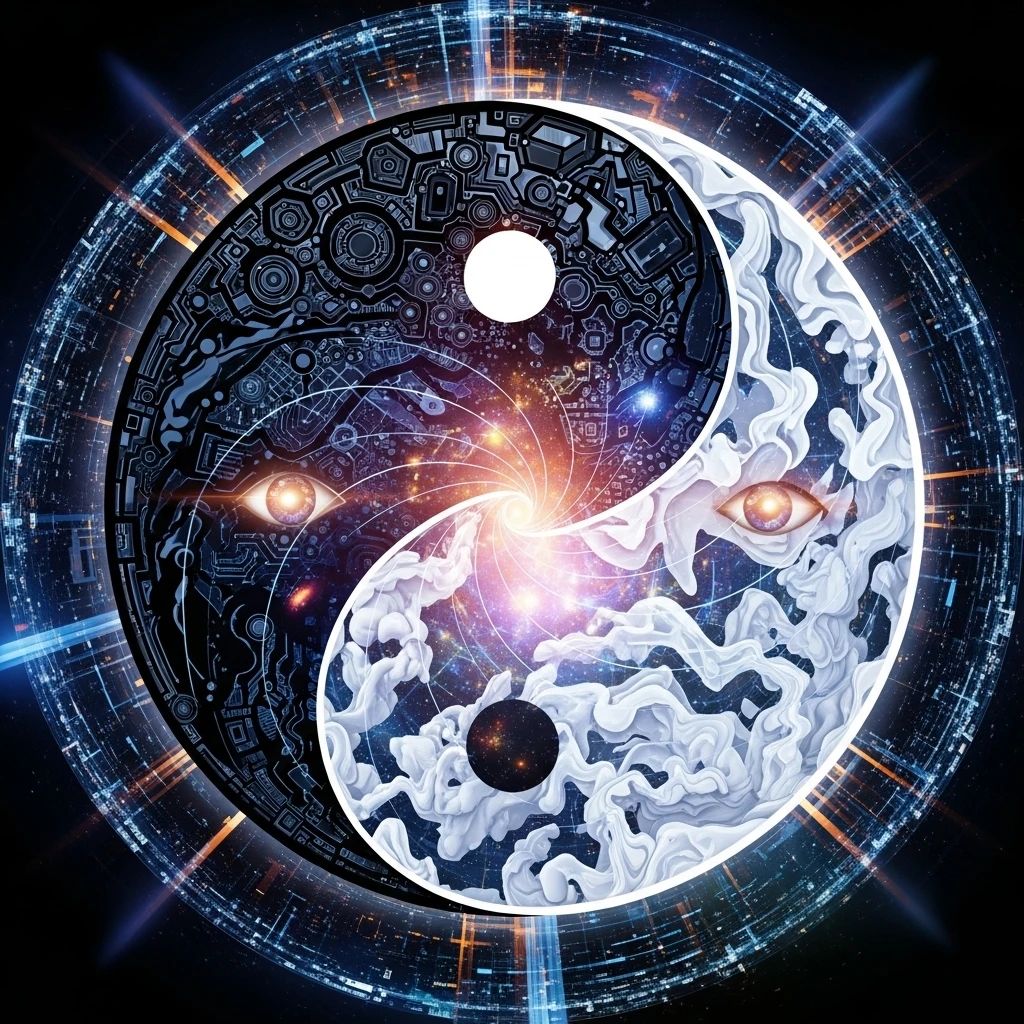“Three gives birth to all things” is not a numerical game, but the minimal logical structure through which systems can be generated and evolve. It represents a universal law of moving from opposition to integration—an idea that runs through both Eastern philosophy and modern computational theory.
I. The Structural Logic of “Dao” and “Three”
From a system logic perspective:
- “One” is the undivided whole, the “Dao” to which all things return;
- “Two” is opposition and tension, like yin and yang, positive and negative—the foundation of world unfolding;
- “Three” introduces a mechanism of reconciliation and interaction within binary opposition, transforming a static structure of contradiction into a dynamic process of generation.
Without “Three,” opposition falls into eternal deadlock and no new thing can evolve.
II. The Ternary Structure of the Organic Computer
This ancient wisdom is astonishingly confirmed in the frontier conceptual model of the “organic computer.” This model also manifests as a ternary structure:
1. Turing Machine
- Corresponds to the deterministic, logical pole in the “Two”;
- A formal system;
- Processes Shannon information, representing rigorous rational deduction.
2. Oracle Machine
- Corresponds to the nondeterministic, intuitive pole in the “Two”;
- An unprogrammable dissipative structure;
- Deals with halting problems, Gödel’s incompleteness, and other “undecidable problems,” endowing the system with the ability to generate meaning.
3. Ordinal Logic System
- This is the critical “Three”;
- A transfinite iterative system;
- Harmonizes the tension between Turing machine and Oracle machine in a spiral unification, enabling self-evolution and hierarchical transcendence of the system.
III. Dialectical Unity: The Synthetic Logic of Rationality and Intuition
This structure perfectly embodies the dialectical unity of rationality and intuition:
- Turing Machine: Rational logic
- Oracle Machine: Intuitive judgment
- Ordinal Logic: Dynamic synthesis
By introducing the “third structure,” the system acquires:
- A division-of-labor mechanism between computability and undecidability;
- An interactive path between meaning and structure;
- The capacity for self-correction and open-ended evolution.
Just like: “Dao” gives rise to yin and yang, and Qi animates their transformation; proposition and antithesis, through synthesis, reach a higher level of cognition.
IV. The Taiji Diagram: A Geometric Metaphor of Philosophy
The Taiji diagram, as a visual symbol, deeply reveals the structure of the “ternary system”:
- The black and white fish: symbolize the “Two”—yin and yang, opposition;
- The fish eyes: symbolize self-reference—each pole contains the seed leading to the other (Gödel’s incompleteness);
- The outer circle: is the third structure—a closed yet dynamic ordinal time system that allows opposites to evolve in a spiral manner.
Without the “outer circle,” black and white opposition can only deadlock; With the “third dimension,” true life and evolutionary systems can emerge.
V. Conclusion: “Three” is the Starting Point of Generative Structures
“Three gives birth to all things” is not mysticism, but a profound expression of systems theory + evolutionary philosophy + computational logic.
It represents:
- A structural closure through which opposites can be unified;
- A time dimension through which systems can evolve;
- The minimal condition for all creative emergence.
In Turing logic, organic computers, the Taiji diagram, and even Bitcoin’s consensus mechanism, “Three” is the hidden generative principle and source of order behind it all.
